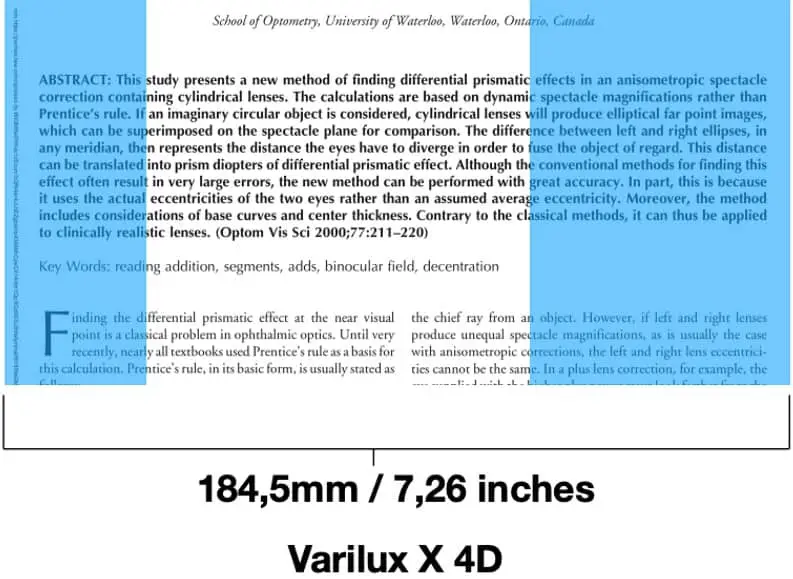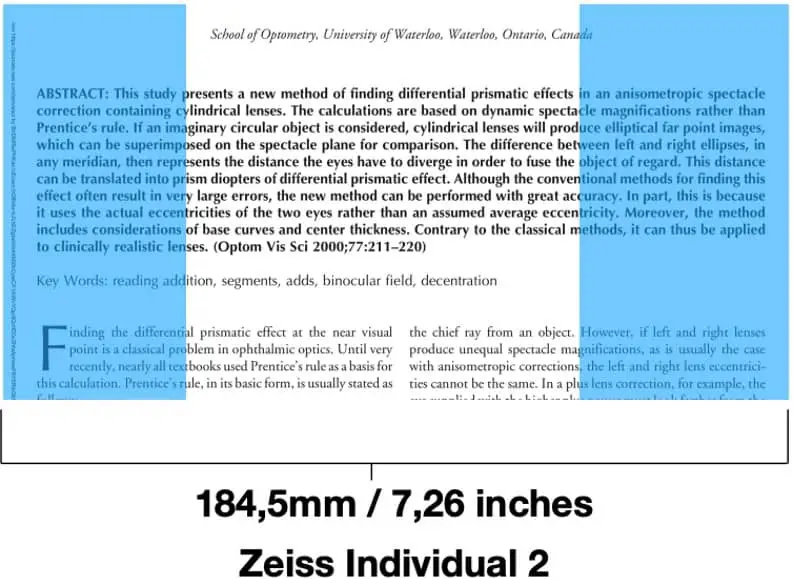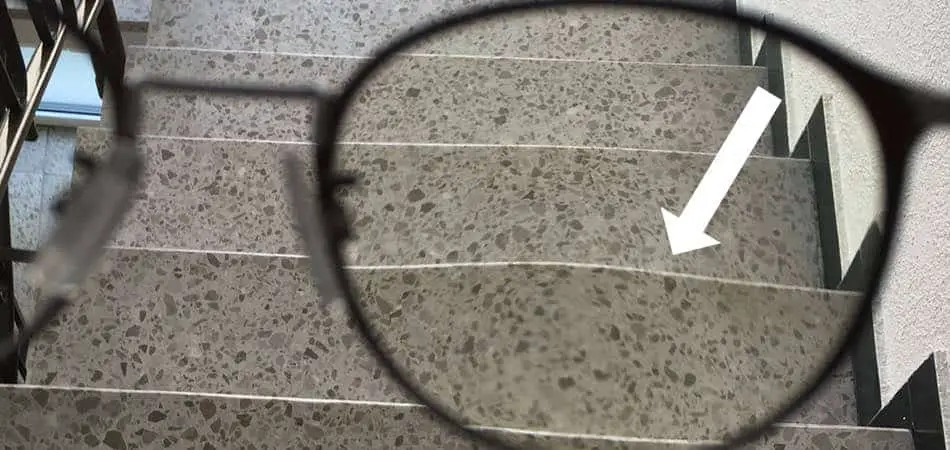This article is about the general question of whether Zeiss or Essilor produces the better lenses. Both companies produce high-end lenses in the single vision and progressive range. The optimizations also have quite a similar effect and are subjectively perceived differently positively from customer to customer.
These optimizations manifest themselves for the wearer in a larger field of vision or a somewhat sharper view. Of course, as a customer, you want both. Essilor stands with its progressive lenses on the market for very soft designs, which means that minimal blurring in relation to progressive lenses is already perceptible earlier in the field of vision, but this should not be so noticeable in the periphery. Zeiss also uses soft designs, but the sharp field of view is a little wider.
Specifically, in the case of the Essilor Varilux X compared to the Zeiss Indivdual 2, this means that the sharp field of view at close range looked like this in the picture.
In the side areas of the lower half, we had virtually the same blurring and distortion. It is important to understand that this is an isolated experience and some eyeglass wearers actually prefer Zeiss or Essilor. However, as a rule, the choice matters less because the lens designs are quite similar after all. That’s why some customers swear by Essilor, while others say Zeiss is the favorite.
In this article, we will focus on what is comparable between the manufacturers and our empirical values. To begin with, we can’t say in general that Essilor or Zeiss makes the better lenses. Opticians who have had a lot of experience with both companies can confirm that every lens in progressive vision has problems in terms of blurring and distortion in the side areas.
So does every other manufacturer. Here in this article, however, we focus on the size of the sharp fields of view, perceptible differences in terms of color fringing, and coating technology.
Sharp Fields of View on the Zeiss Individual 2 Compared to the Essilor Varilux X.
Here, we compared the sharp visual ranges shown by the Essilor lenses and Zeiss lenses in a test. These ranges refer to the near range, since here the field of vision is always more limited with progressive lenses than in the distance range. During the test, meticulous attention was paid to taking the best distances for each lens, so that the sharp visual ranges would be as large as possible for each lens.
The Zeiss individual 2 performed slightly better in this test, offering wider viewing areas. In the images attached below, you can see where the sharp and out-of-focus visual areas are located in the field of view. In the test, we looked at a cell phone.

The areas marked in blue represent the out-of-focus viewing areas. The size information is also available. It is also interesting to note that with the Varilux X from Essilor, the visual areas were not only somewhat smaller, but also decentered to the left. Although the centering of both lenses was checked several times.

Color Fringes at Varilux and at Zeiss
With Zeiss and with the Varilux lenses I could perceive color fringes. It is important to know that both were tested with the material 1.6. With the Zeiss lenses, the color fringes were much less present compared to the Essilor lenses.
Both brands produce with high-end technologies, but when I looked at a bright wall in strong sunshine or at the white stripes of the road, I could perceive a slight yellow or blue shadow next to it.
With the progressive lenses from Essilor, I actually found this a bit annoying, while with the Zeiss lenses, you could overlook it because the color fringes were simply less intense.
Coatings From Varilux (Crizal) And From Zeiss (Duravision)
The premium coatings at Zeiss is called Duravision and at Essilor it is called Crizal. Both manufacturers have different coating packages that reduce blue light, offer higher UV protection, include anti-reflective coating and are also easier to clean.
With both coatings, there are slight residual reflections that are a slightly lighter blue with Essilor and usually a slightly darker blue with Zeiss. In most cases, the Zeiss coating will be less distracting due to the darker residual reflection on the surface.
It was while driving that I noticed more reflections on the Essilor lenses. Here I have worn the lenses of the two manufacturers in the same model of glasses in as far as possible the same setting in relation to the angles and distances of the lenses in my face. This is the only way to really compare eyeglass lenses.
Curved Lines – How Did Both Progressive Lens Manufacturers Compare?
With both lenses, I perceived straight table edges or stair treads as curved. Essilor and Zeiss lenses are very good in terms of technology and both manufacturers are preferred by certain customers. So both manufacturers have their following. In my personal wear test, the Zeiss individual did better overall. However, both manufacturers still have their disadvantages.

It must be clearly communicated by opticians that the out-of-focus areas in the vicinity are many times larger than the sharp areas. Because this is often not apparent through cleverly placed advertising and less informed customers are then surprised, annoyed or disappointed.
You won’t go wrong with Essilor or with Zeiss. It depends above all on how precisely the glasses are measured and how much time is devoted to you and the details during the fitting. Because a measurement done too hastily will cause errors to creep in, making the best lens worse from the sharp visual fields for you.
If you want to learn more about the different visual fields of other manufacturers of progressive lenses, then I have here another article for you that will certainly interest you.
